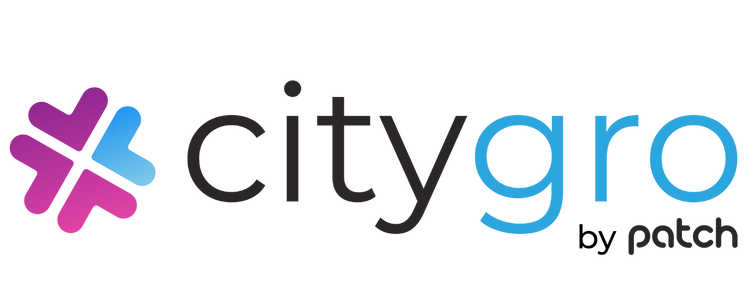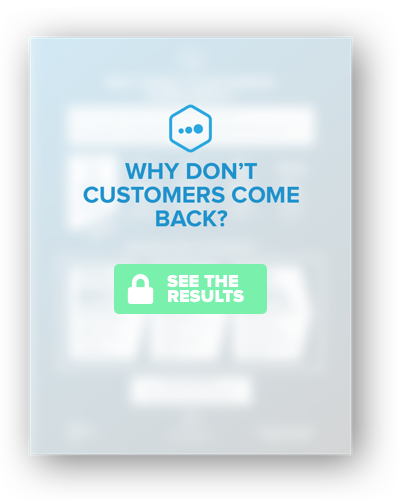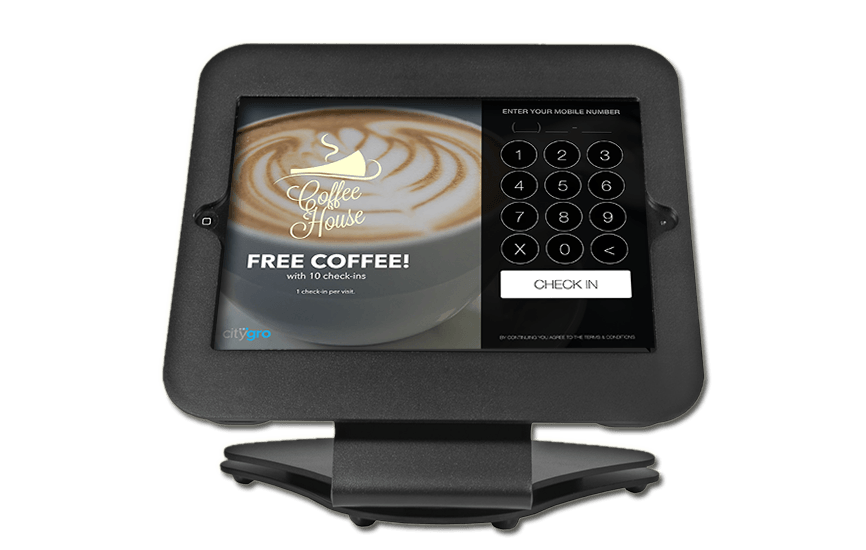CGL: Our #1 Tip That Could Double Your Customer Loyalty
Transcript:
Jon: Alright, welcome back. I’m John with CityGro where we bring customers back and I’m joined today by Channing, our number one account pro. Are you number one?
Channing: I’m number one.
Jon: What did we talking about, wearing the same shirts. Aren’t you supposed to know what I wear and then change to a different color?
Channing: Yes, but I aspire to be like you..
Jon: Maybe we should coordinate. Maybe send a coordination text.
Channing: When I say dress the part, just trying to emulate the best.
Jon: Well, either way, I’m glad you’re here. We’re talking about a topic that I’m stoked about today. In fact, when the title came across my desk and I think it said “better ways to increase customer loyalty” and after realizing what we’re talking about, I changed the title and made it “number one way to increase customer loyalty”. That true or is that true?
Channing: It is One hundred percent. I’m right behind you on that one.
Jon: Okay. Well, I don’t want to leave anyone in the dark here. What are we talking about today? What is the number one tip for increasing customer loyalty?
Channing: So the number one tip for increasing your customer loyalty program is getting your employees to invite customers to join in. I mean that… the plain and simple…
Jon: The employee buy-in.
Channing: The employee buy-in. That is the number one tip if you can get your employees to buy into your loyalty program, you will, you will be usually double if not more, your loyalty program.
Jon: So, so why is that? Why is it such a big deal to have your whole team on board?
Channing: Uh, you know, there’s a lot of obvious reasons for that, but I mean, some of the most basic is; it’s a call to action. As you just look in your own life and you look in the lives of people you see, you know, a lot of times we don’t do anything until we’re called to action. I can’t tell you how many programs that I have seen, you know, going into stores and I’ve seen that they have a text program, uh, or even just a loyalty program and I see it and I’m like, “uh…maybe”. I’m going to just go through my process and I buy my stuff and go in and out. But I tell you what, how many times have I joined programs because when I’m when I’m there and an employee says, Hey, do you want to join our loyalty program? You know you get, you get rewards and points and stuff. And I’m like, “Yeah… Why not? I’ll give you my phone number”. That’s easy. And I’ve joined many a program just by being invited. So it’s that call to action.
Jon: So, so this is not an “If you build it, they will come” type strategy.
Channing: That doesn’t work here.
Jon: This is “If you build it and actually implement it, it’ll work”.
Channing: Absolutely. And so it really, it’ll just, it just all funnels down to the invitation. And honestly, I hate to say it, but you know, signage helps. I mean it is, it’s another tool to try and help you get people aware and thinking about it subconsciously. But at the end of the day, a sign doesn’t call to action like a personal invite from an employee looking you in the eyes, you know, and saying, “Hey, would you like to sign up for this?”
Jon: Yeah, I a hundred percent agree. In fact, these are, you mentioned signage. I think sometimes signage can be a crutch for us because we lean on it and then think, well, the sign is there… now, and I do agree there are times when if the employee fails to ask, the customer will ask because they see a sign so you need signage. We love the digital kiosks that we use because of it, it’s visual, but it still doesn’t have the same effect as what you’re talking about. Just a simple invitation to participate and it doesn’t matter what program you’re in or what strategy you’re building, whether that’s a digital one like we do, or paper punch cards or anything else. Employees need to participate.
Channing: Yeah, absolutely. So what I mean, just like reiterating that, you know, signage is great. There’s a lot of other things that we can do to try to drive attention to it. You know, having the kiosk in the right place, you know, that helps, huge, massively. But at the end of the day…
Jon: And the incentive and everything else.
Channing: Yeah, the end of the day, the invitation is the strongest tool you have in your arsenal to get people to sign it.
Jon: So, so I have one comment and then I then all I want to get into how do we do that? How do we get employees to buy in or what different types of topics have, but it reminded me of. I get asked a lot when I get into a business, you know, I’ll see a text program and I’ll even ask the employee, I’ll say, “Hey, what’s this all about? You have a text program? What’s this all about?” And the way they respond is what dictates whether I join the program or not. Because if they respond, and I’ll give you an example. What if they. What if I came in? They responded, “Oh, you know, it’s just a text program. You get a bunch of texts. I don’t really know what they send out.” Am I likely to join that? Probably not. But if they come back and they say, “You know what, that’s where all of our best offers go. The first one to know about in products, the first one to know about when we change out inventory, whatever it is, you should join it. It’s only like once a week that we send out messages. We really try to not invade your personal space. You can always reply, stop, but you should definitely do it. Cause that’s where the deals are.” Now I’m going to join it.
Channing: Right.
Jon: Right?
Channing: Yeah.
Jon: You can tell I’m passionate about it.
Channing: I can tell.
Jon: I’m gonna shout it from the hilltops.
Channing: Don’t worry. We will get into it.
Jon: Let’s get into it.
Channing: That’s part of some of the stuff we’re talking about.
Jon: All right, so let’s talk about how do we get our employees to buy in? What are your tips?
Channing: So three quick tips for that is incentives. You can always make incentives for your employees to, uh, to invite people. Uh, you can set store incentives. I mean you can, there’s a lot of kinds of incentives you can do. Uh, whether that be actual pay or just other benefits or whatever it is you can do incentives. Another one is training and we’ll talk about training.
Jon: So, so slow down here real quick. So incentives based on how much participation they get, that kind of thing?
Channing: Absolutely. You can do. Participation, you can do invites. I mean, there’s a lot of different ways you go about it, um, because I mean in reality, you know, some people in, at the end of the day, your customer has the right to say no, and so you can do invites, you know, like how percentage of invites, you know, how many customers came in through and how many people were invited or asked.
Jon: I really like that and it’s, it’s important to note. And then you kind of made note of it just barely. But an incentive is… or an invite is not a sales pitch.
Channing: Right. Exactly.
Jon: Right. We’re not requiring your, you to turn all of your employees into sales reps that are really tugging on people’s coats, getting them to join. An invite is just that. It’s just an invite. If they say no, great, it’s a numbers game. If I invite 100 people, I’m probably going to get half of those to say yes. Half of them will say no, but I still got to just invite. And that’s a that’s key. So I liked the incentive just based on an invite. I’m not always based on performance. You could do it based on performance but optimize the invite.
Channing: But then you’re making each of your employees a salesman and that presents a whole set of challenges sometimes. So, and also takes the stress off. If your employees understand that it’s not a sales pitch and it might help them buy into it because it’s like you’re just inviting someone.
Jon: Yeah, thanks.
Channing: Hey, are you a member, do you want to be a member? You know, here’s the benefits or do you have any questions about it? Kind of a thing. Um, so next step is training. We’ll actually be talking about training a little bit more in just a second because that’s probably going to be your best, uh, best tool to help your… to help them. Um, and then I guess I have to backtrack a little bit on that. Probably the best thing that’s going to be for your customers… for your employees is to just tell them, “Hey, I’m watching this and I’m going to track it.”
Jon: Yeah. Let them know that you’re looking at the numbers.
Channing: “Hey, I’m going to be watching to see if we’re inviting people and I can actually see the numbers.” like with us, if you’re, if you use CityGro tools, uh, you, you actually can be able to see, you know, your loyalty by day and all those kinds of things and so managers and owners can actually look at that and actually see if this is happening. So you can tell, you can tell your employees, “Hey, this is important to me, you know, this should be important to you and I’m going to be watching it now.”
Jon: And you really got to watch those numbers too. And I say it all the time here around CityGro, “If you can’t measure it, you can’t manage it.” Right? And so you’ve got a, if you’re doing paper punch cards, count how many you give a day, count how many come in and count how many are redeemed. And then sometimes more than just telling your employees that you’re, that you’re measuring that stuff. Asking them say, “Hey, we hit, we hit 100 yesterday. Do you know how many we can get today?” And see if they know that and the more you ask them, sooner or later they catch on, hey, this is a big deal in our store.
Channing: Exactly. So, so I guess kind of continuing with that, letting them know how important it is, it’s gonna come through training, training, training is also going to help your employees know this is important and it’s also going to help them feel comfortable doing it. And so a couple ideas, a couple of things of doing that, uh, demonstrate the tools that you have, you know, whatever it is. So if you have a kiosk, show your employees the kiosk. Have them walk through it and know exactly what a customer would experience, you know, if you have, if you have offers going on, show them the offers, you know, show them some examples of these offers.
Jon: By the way, they should all be a part of the program your using. So if you have an email newsletter that you’re doing or a text blast that you’re doing, your employees, your whole team should be required to participate in that just so they know.
Channing: I know exactly, cause if I got a text this morning, I’d be like, oh, this, oh, I’m expecting people to come redeem this offer today because I just got a text that said, “Hey, come in and get free food.”
Jon: It’s funny how many times the owner knows, and the manager knows, the marketing manager knows, but the employees of the team, they don’t know. And, and, and know details as well because when somebody comes into your store or your service, whatever it is, those are the front line people they’re asking and if they can’t give you a good response to what, what do you text me about? No one’s going to participate. Just emphasize your training.
Channing: No, and that actually Segways right into my next point, which is: Practice with your employees; Inviting people, practice answering questions. A thing with that: Create a cheat sheet of answers, you know in your training.
Jon: Yes, I love that.
Channing: Um, you know, have a, have a cheat sheet of answers, you know, of typically asked questions. I mean, for instance, you asked earlier if someone asks them, “Oh, well what kind of messages are you going to be sending me?” You know, kind of thing. Well, I mean you have two examples, to and that one was definitely better, but how much better is an example of actually telling them an offer that, that is involved, you know, like, Oh hey, you know, one of our offers that we’re planning on having or have done, you know, if you have done offers in the past, you know, is uh, we’ve done, we’ve done this, and we did it during this time. You know, so look forward to that, you know, kind of a thing. And Oh hey, we heard next week we’re going to have this kind of an offer, you know, involved kind of thing.
Jon: I love the idea that a written out cheat sheet, like you said, like identifying the four or five most asked questions and having a written response that your employees actually study and know what to say. And along with that, what I’ve seen a lot with our kiosk is I’ll go into local stores that have it. And on the back of it is a cheat sheet of the invite so that you’re not leaving it up to them of like, what’s the best thing to say? It’s right there in front of you. This is what we think we should say and change that as, as needed.
Channing: Yeah. No, exactly. And so I, I think that, that cheat sheet will just give comfort, you know, I mean, not only that, but the more sense is you get involved with the training, you know, you know, as you’re talking, they’re listening and the reading and then they speak, you know, practice it and you’re going to get everything involved and people are just… And it’s going to become, it’s going to become a part of the process. And that’s, and that’s the critical training is to make it part of your employees’ process.
Jon: Love it.
Channing: Um, you know, just as another thing, train your employees to be positive and excited about, about inviting. I mean, you know, that’s obviously the goal of the whole part of the attitude of your employee in general, but make sure that they do have an enthusiastic, um, opinion and attitude towards, uh, your loyalty program, your texts program or email marketing. I mean, whatever your programs are that you’re trying to do and implement, enthusiastic.
Jon: Yeah, share the excitement when you, when you have success on a day, like when you hit new benchmarks or when you, when you finally get the percentage that you’re looking for, share the excitement. That kind of goes back to your incentive things, but reward employees that are doing it right because they buy into this stuff. I mean, it’s, it’s what they do for work most of the time they enjoy it, share it with them. I love that.
Channing: And uh, the last, the very last thing that with training just as an idea is an idea guideline for you is make it a part of your regular training. You know, have a, have a big push for it. You know, maybe you have a sit-down meeting, you know, when you show this and you implement it and it’s a big thing and then all of a sudden you never talk about it again. Or you just bring it up occasionally. Make, make it a part of your training process, you know, so whether it’s your weekly training process a monthly, I mean, whatever it is, um, you know, go over it a bit, apart. You don’t have to make it a full training again. But you know, like if you have a kiosk, let’s go over kiosk training. How has your invite about that? You know. If people asked questions about the kiosk, how’s that going, you know, having another day about offers, you know, like, Oh, do you know what kind of offers we did this last month? What kind of offers we have coming up next month?
Jon: Ask them. Yeah.
Channing: If someone has questions about it, just if you make it a part of that, people will realize; hey this is going to stay around. This isn’t something that I could just wait for it to blow over, you know? And um, and, but that’s also a perfect time for you to really stand up and talk about the results, you know, and look at how are things going. I mean you want to check daily and you want to be on top of it that way
Jon: And it’s got to be consistent. I mean, it might take a few weeks, even months to get something implemented where the employees just do it and if you give something a try for 30 days and then stop, I mean definitely tweak it, where it needs tweaking but you know, be in there for at least the long haul, three to six months at least to get your employees and be consistent.
Channing: Yeah.
Jon: Ask them. I love it. So recap those three things for me that you just went through.
Channing: Yeah, about the training?
Jon: Well, are you done? Are you…
Channing: Yeah, I’m done.
Jon: So you have three main things. I see a list of them right there. That’s what I’m referring to.
Channing: Oh, these ones, yeah. Okay.
Jon: Come on. Work with me here Channing. we were doing so well together.
Channing: We’re on the same page now, after you told me.
Jon: Recap them for us.
Channing: So, uh, incentives, uh, you know, if you, if you have incentives for your, for your employees to be involved, I mean something as easy as a pizza party. I mean, you know what I mean, like a treat something incentivized. Your employees.
Jon: Ok so, number one incentives, number two?
Channing: Training.
Jon: Training.
Channing: We’ve talked about a bunch of points, but training is going to be critical and making it part of their process.
Jon: And number three:
Channing: The last thing is to let them know that you’re, that you’re tracking it.
Jon: Tracking.
Channing: Let them know, let them know, track it, actually track it, and then follow up with them, tell them, ask them how it’s going, and then let them know what you see and that’s what they see. And then you’ll be on the same page like we are.
Jon: Awesome. I want to end with just a quick, uh, I, I actually have a customer from our early days here, CityGro that this comes to mind anytime we talk about this. It was, it was an owner-operator, he owned an ice cream shop. He put the CityGro iPad in his ice cream shop and I remember it because it was pretty early, it was like 2012 when we just started getting into the kiosk and we were kind of measuring performance and so, um, so I talked to him regularly and this guy was killing it. I mean he was getting thousands of people a month to sign up and he would give me numbers of how many people purchased ice cream versus how many signed up and it was like 90 percent of people sign up for his loyalty program. And as I asked him more I found out that he’s the one that owns a, that not only owns it but operates it. I mean he’s there like 90 percent of the time. And the difference between him and employees is when people come through, you would talk to him, let him know what toppings, it’s a self-serve environment. And then when they come through he would help them sign up and he literally guided them the whole way. And because of that experience, he had tens of thousands of people when he sold his business, a long story short; added value because he had that list. When he turned it over, they already had a customer database. They love that it was so valuable, all because he did these three things.
Channing: Yup. And to go along with that, I have personally seen, uh, in the last couple months, a company that it went to, the, even a step farther, that the owner got involved, was involved with me. I was helping him and I will never forget he had a training with his employees. He did an amazing training with them. They bought in and they just exploded to hundreds of contacts in weeks. They were a busy location in the first place.
Jon: I love it.
Channing: But I remember when I asked him, I was like, what happened? He’s like, “You know, I talked to my employees, I taught them what I want them to do. I told them I expected it and they’ve been doing it.”
Jon: Awesome.
Channing: Success.
Jon: Well, I think that’s a good note to end on. What do you think?
Channing: I think that’s a good one too.
Jon: Okay. Well, we appreciate you being here with us. As always, let us know if you have any questions or topics that you want us to chat about. We do this daily and so it becomes a really fun thing for us to share some of the tactics we use in-house with you guys and a Channing. Thanks for being here.
Channing: I’m glad to be here.
Jon: See you guys next time.
Channing: See you.
Jon: All right.






 Get this section from Jon. Get this section from Jon. Get this section from Jon. Get this section from Jon. Get this section from Jon. Get this section from Jon. Get this section from Jon. Get this section from Jon. Get this section from Jon.
Get this section from Jon. Get this section from Jon. Get this section from Jon. Get this section from Jon. Get this section from Jon. Get this section from Jon. Get this section from Jon. Get this section from Jon. Get this section from Jon.

